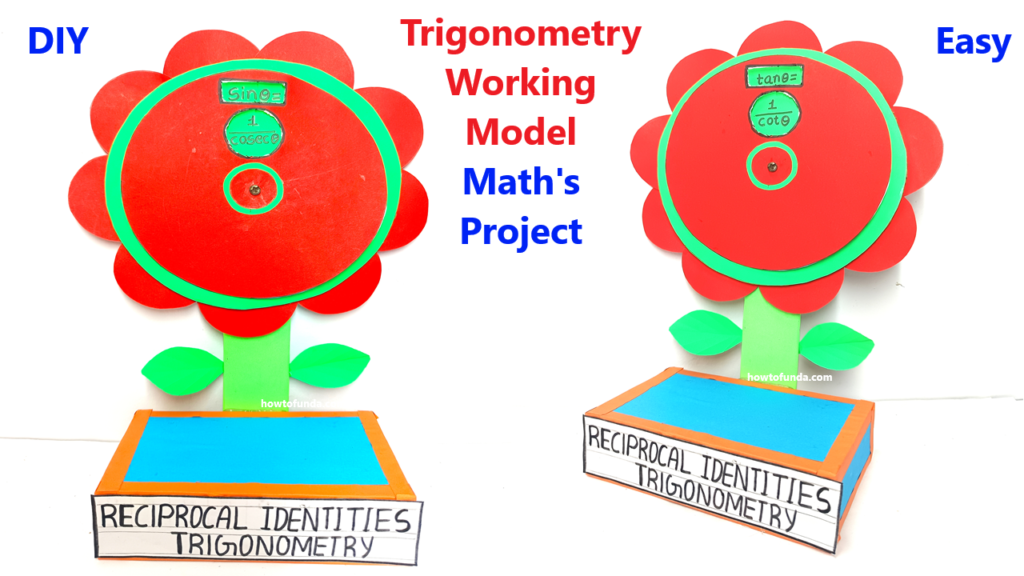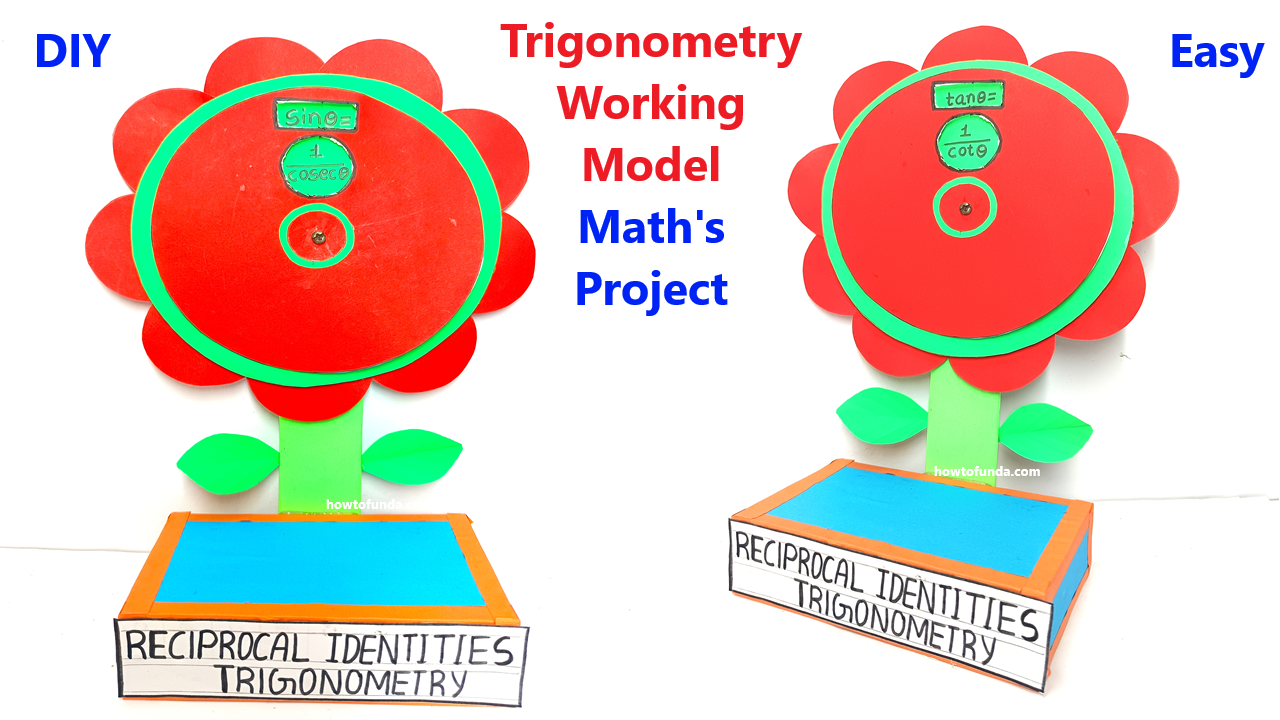Here’s a Trigonometric Identities Working Model design idea in a rotating flower format, using color paper, a push pin, and cardboard. This model will visually represent trigonometric identities, making it interactive and engaging.

Concept:
The model displays major trigonometric identities in a flower-like structure, where each petal represents one identity. The petals are attached to a rotating center so students can turn it to view different identities.
Materials Needed:
- Cardboard: For the base and flower structure.
- Colored Paper: For the petals and decoration.
- Push Pin: To create the rotating mechanism.
- Marker/Pens: For writing the identities and labeling.
- Glue or Tape: To fix materials in place.
- Protractor Template: To help with circular symmetry.
Design Overview:
- A large circular flower with colored petals that rotate around a central hub.
- Each petal displays a trigonometric identity, such as:
- sin2θ+cos2θ=1\sin^2\theta + \cos^2\theta = 1sin2θ+cos2θ=1
- 1+tan2θ=sec2θ1 + \tan^2\theta = \sec^2\theta1+tan2θ=sec2θ
- 1+cot2θ=csc2θ1 + \cot^2\theta = \csc^2\theta1+cot2θ=csc2θ
- The rotating mechanism allows users to turn the petals and explore each identity.
Step-by-Step Instructions:
1. Prepare the Base:
- Cut a circular base out of cardboard (approx. 10–12 inches in diameter).
- Cover the base with color paper for a clean look.
- Divide the circle into equal sections using a protractor, one for each petal (e.g., 6 sections for 6 petals).
2. Create the Flower Petals:
- Cut petal shapes from colored paper (each about 4–5 inches long).
- Write one trigonometric identity on each petal, such as:
- sin2θ+cos2θ=1\sin^2\theta + \cos^2\theta = 1sin2θ+cos2θ=1
- 1+tan2θ=sec2θ1 + \tan^2\theta = \sec^2\theta1+tan2θ=sec2θ
- 1+cot2θ=csc2θ1 + \cot^2\theta = \csc^2\theta1+cot2θ=csc2θ
- sin(90∘−θ)=cosθ\sin(90^\circ – \theta) = \cos\thetasin(90∘−θ)=cosθ
- tanθ=sinθcosθ\tan\theta = \frac{\sin\theta}{\cos\theta}tanθ=cosθsinθ
- cotθ=cosθsinθ\cot\theta = \frac{\cos\theta}{\sin\theta}cotθ=sinθcosθ
- Decorate the petals with borders or designs to make them visually appealing.
3. Assemble the Rotating Mechanism:
- Cut a small circle (about 2 inches in diameter) from cardboard for the center hub.
- Attach the petals around the edge of this circle using glue or tape, ensuring they can fan out evenly.
- Place the hub in the center of the base and fix it with a push pin. The pin should allow the hub (and attached petals) to rotate freely.
4. Label the Base:
- Write the title “Trigonometric Identities” at the top of the base.
- Below the rotating flower, add a short description like:
“Explore the fundamental relationships of trigonometry by rotating the petals!”
5. Add Interactive Arrows:
- Use small paper arrows or markers to indicate the rotation direction on the base. This helps guide users on how to interact with the model.
Demonstration:
- Rotate the flower petals to display one identity at a time.
- Explain the mathematical relationship and real-life applications of each identity (e.g., in physics, engineering, or geometry).
- Highlight how the identities connect to form the foundation of trigonometry.

